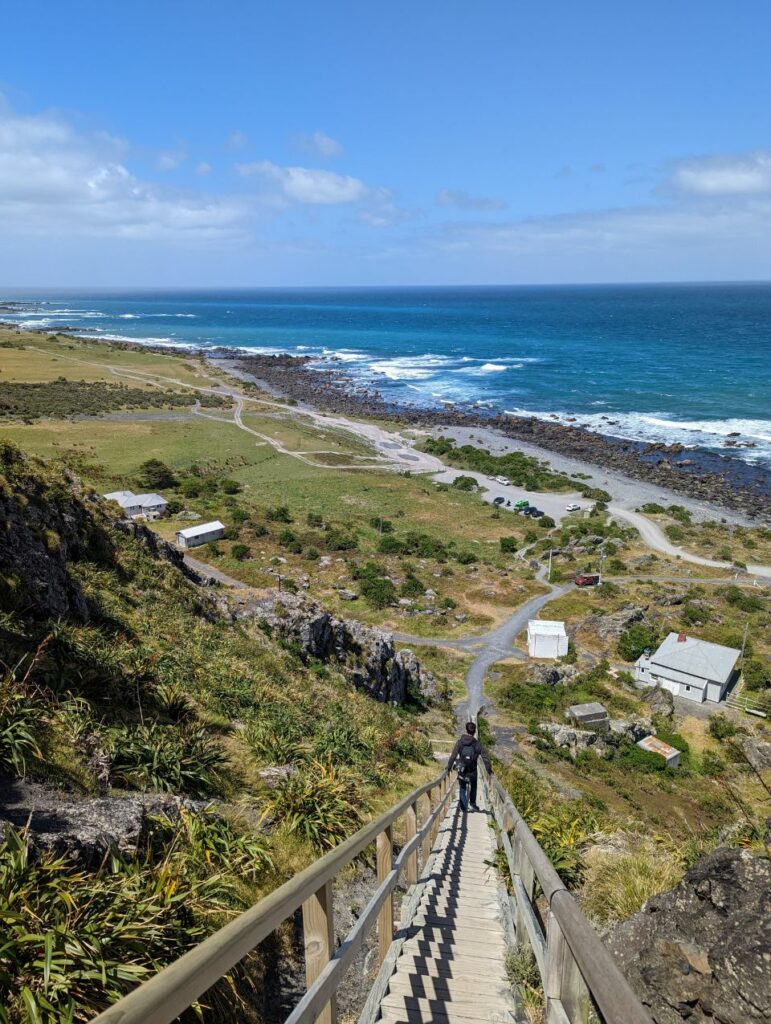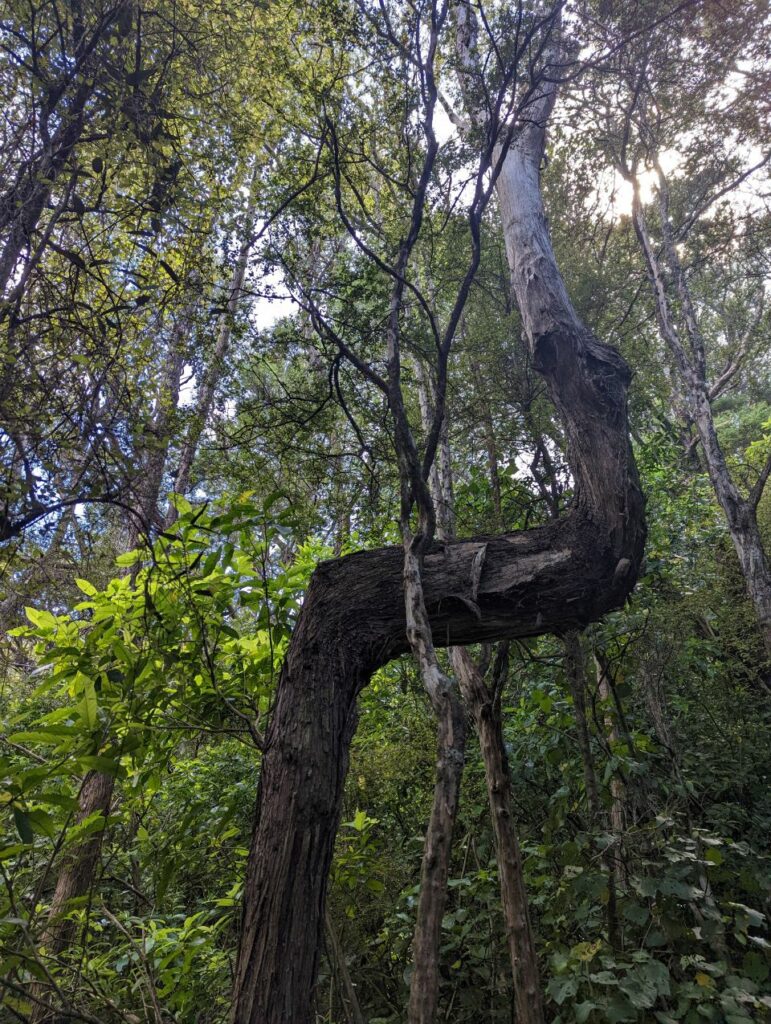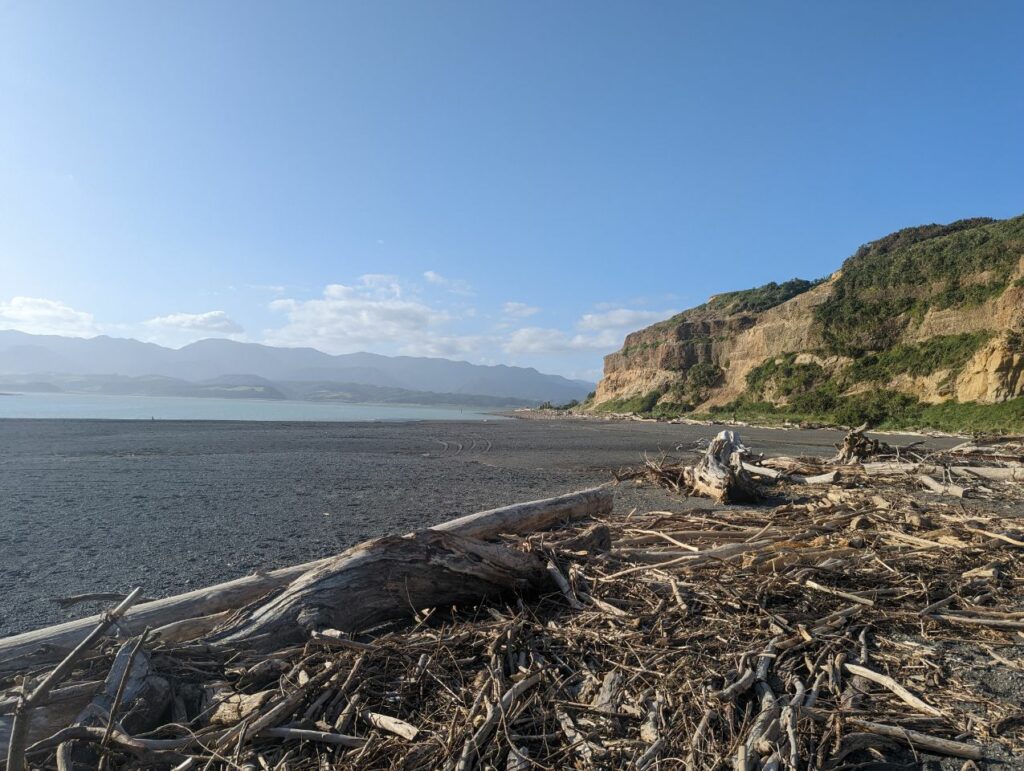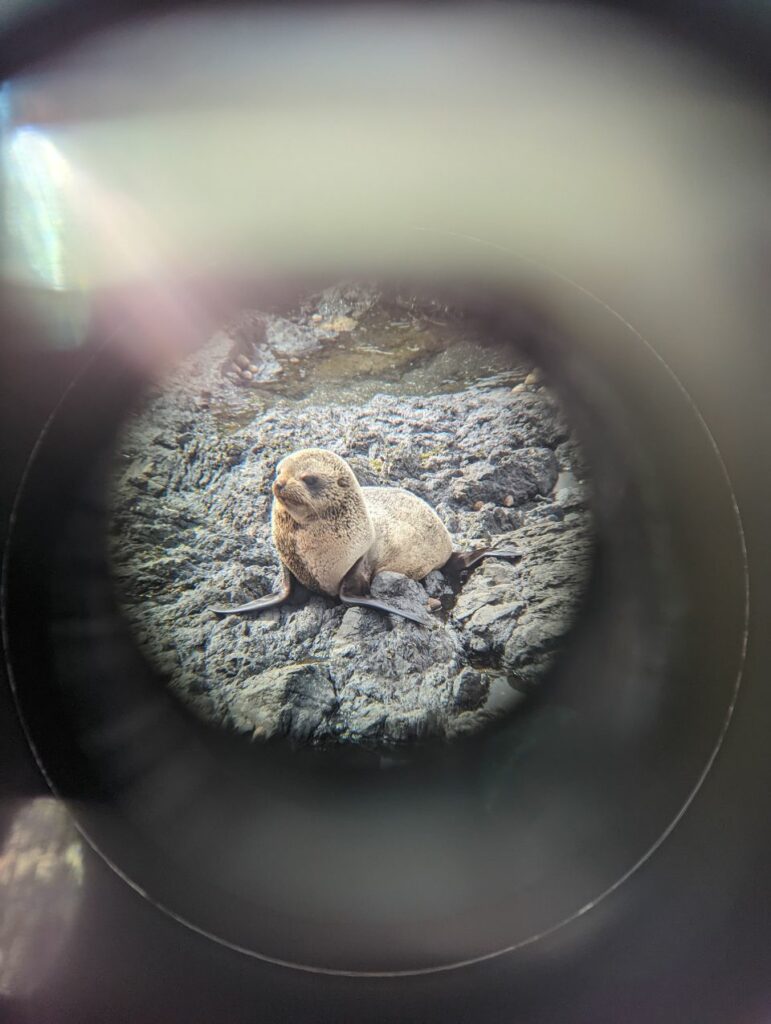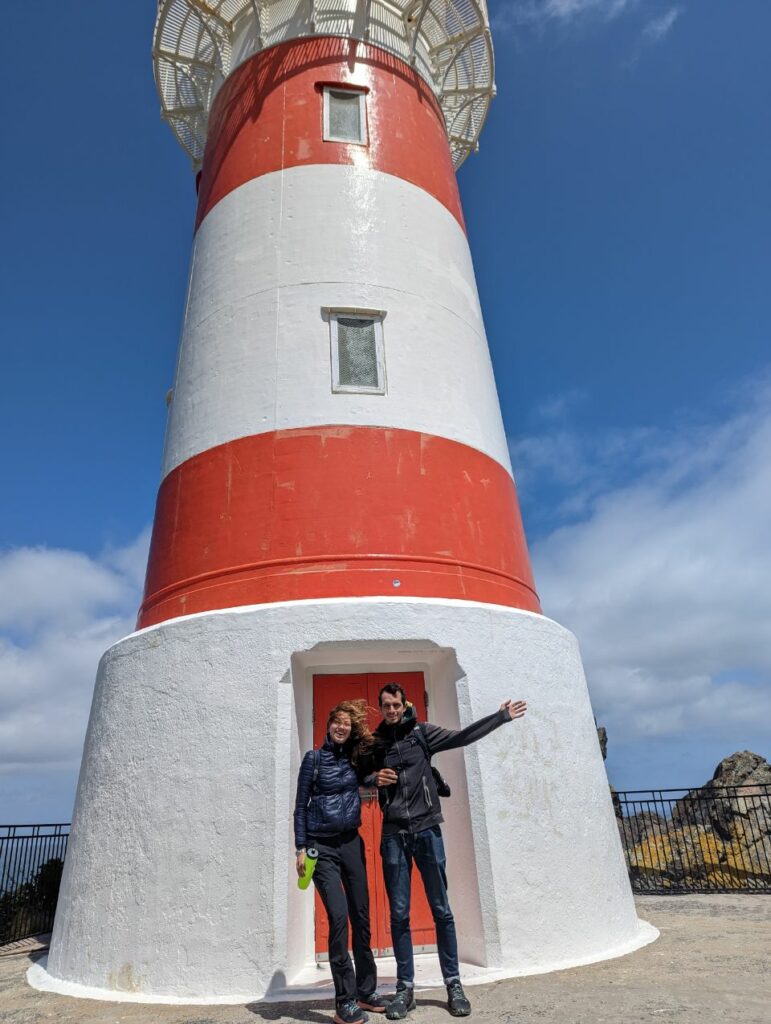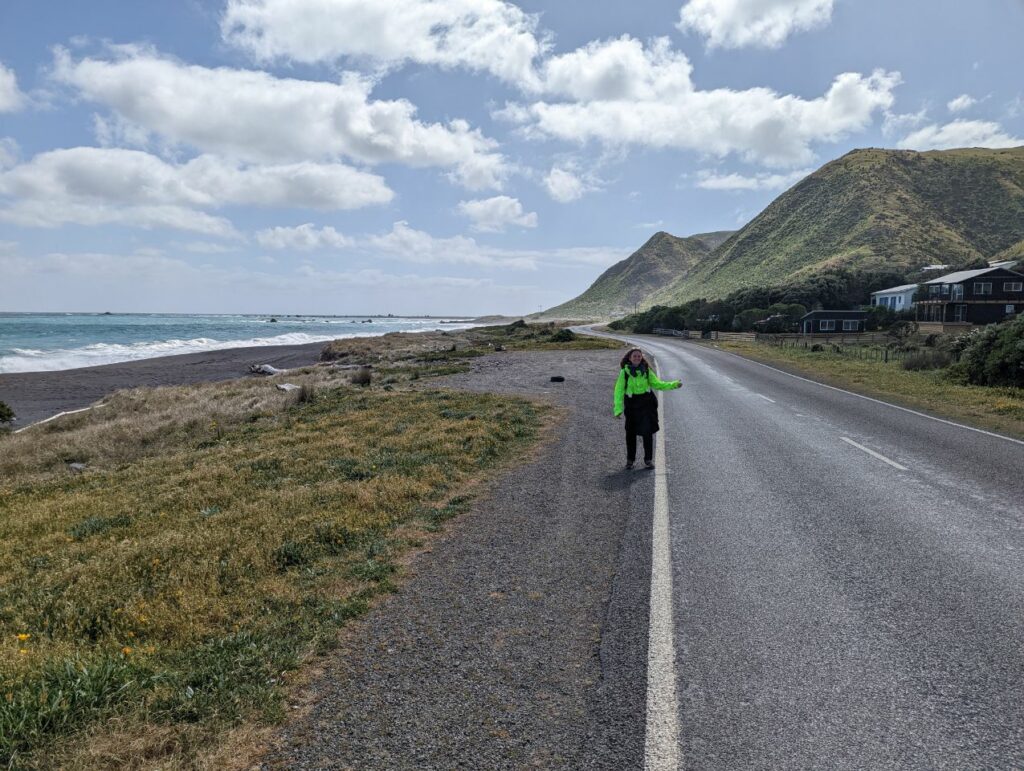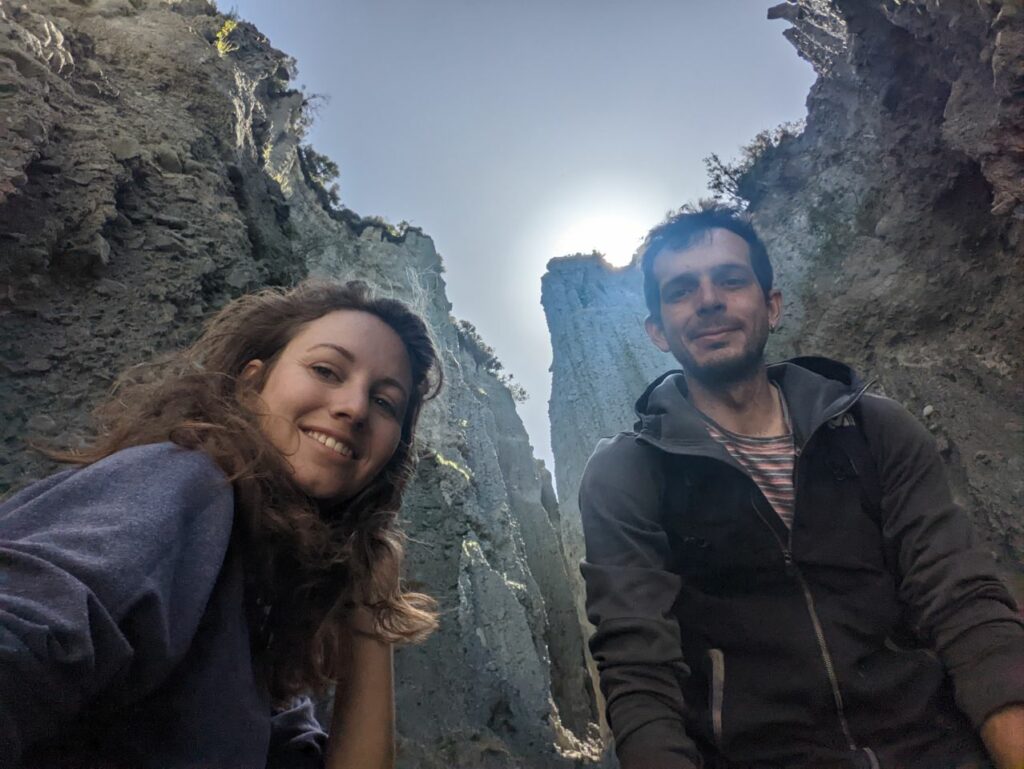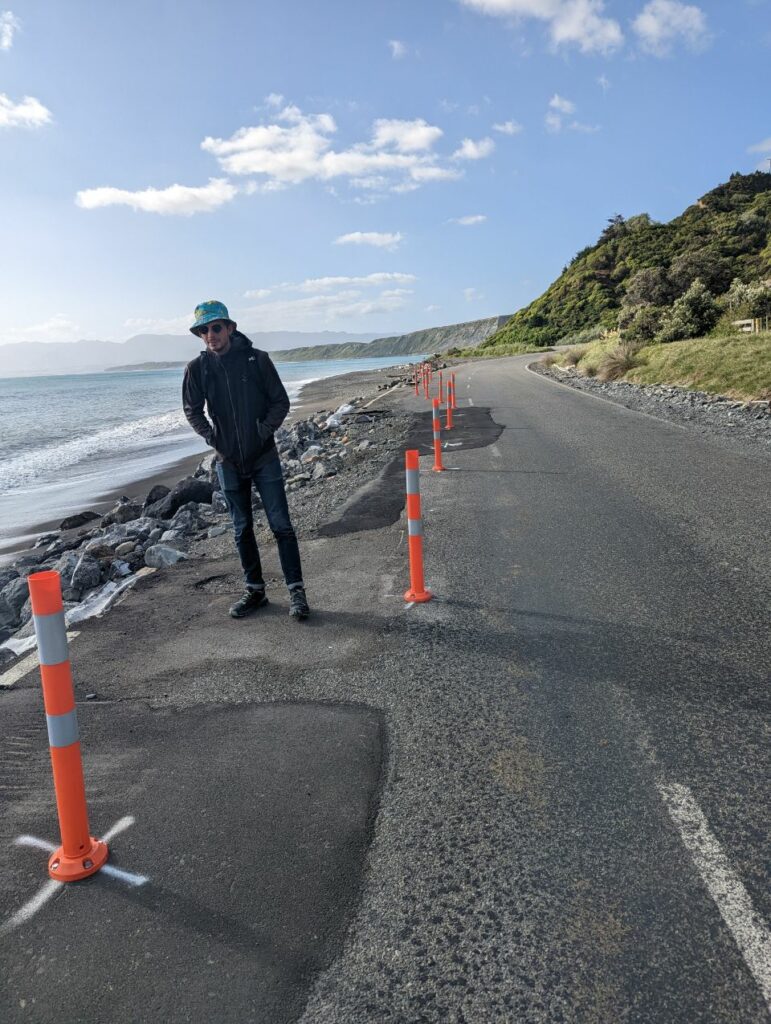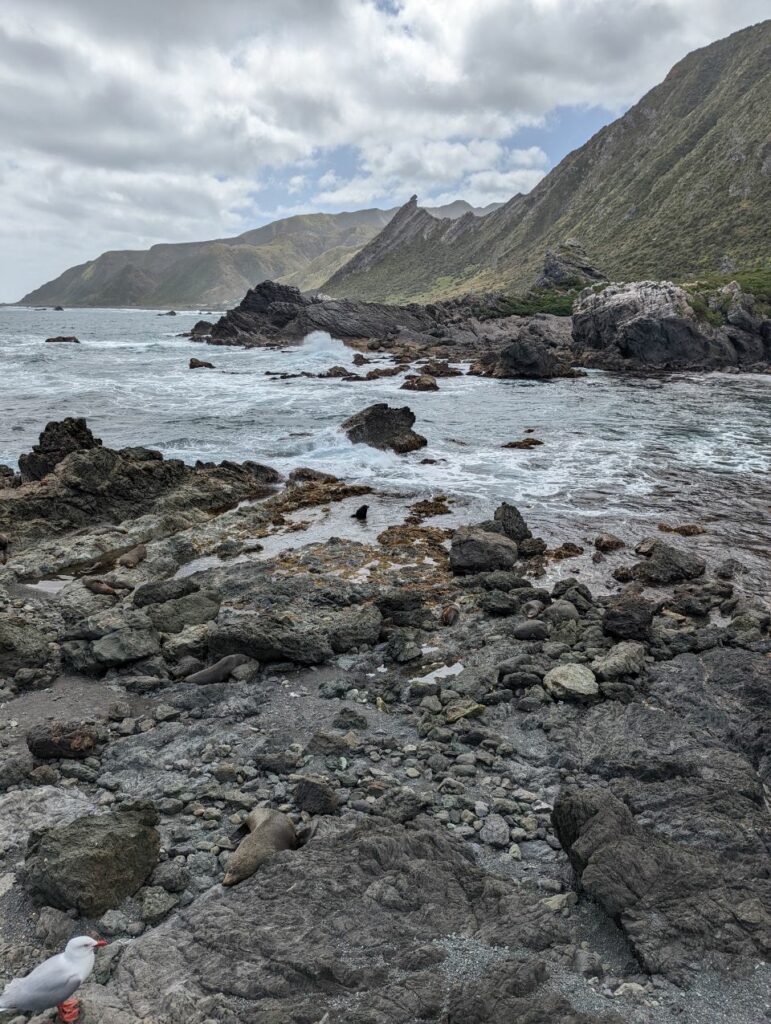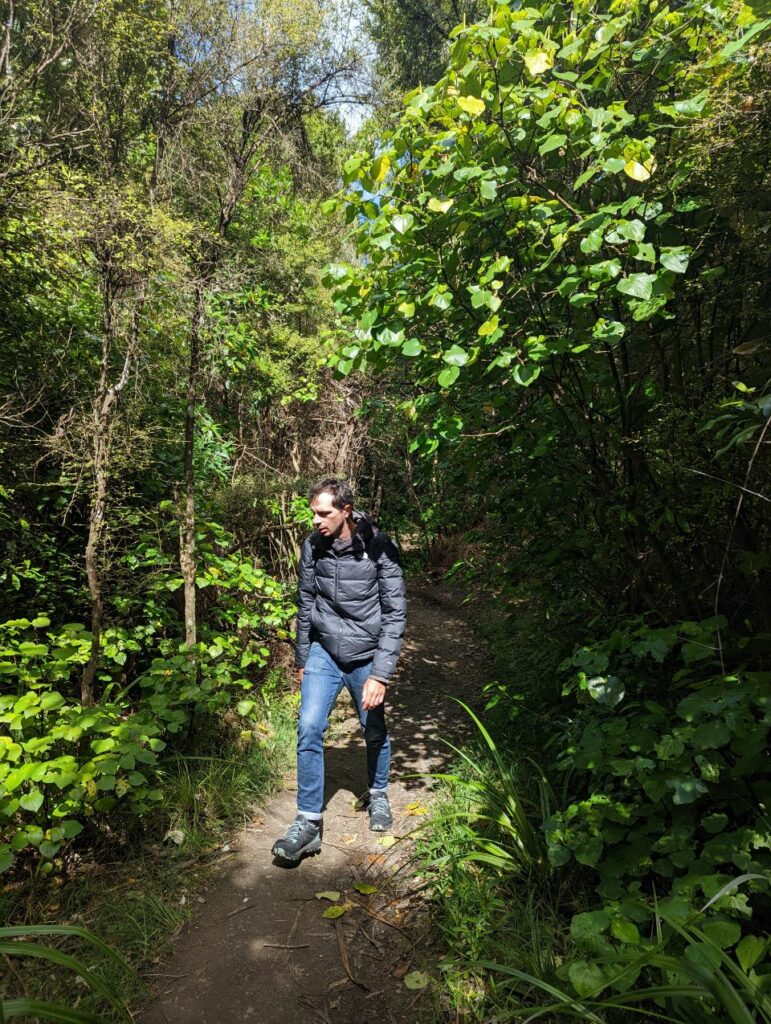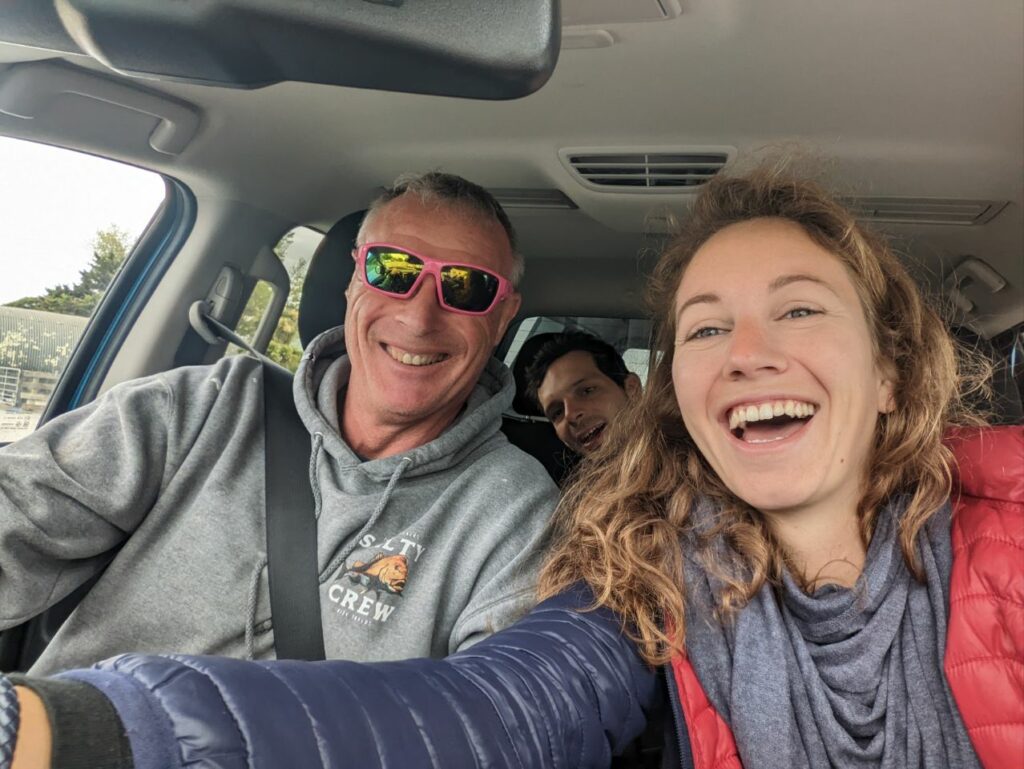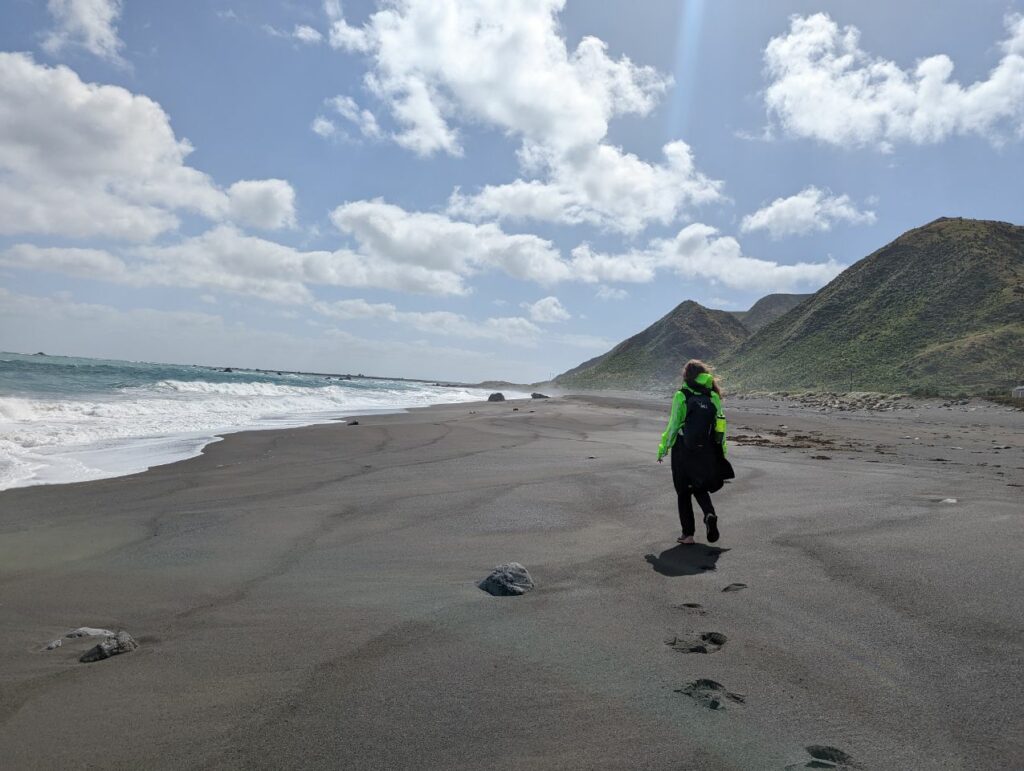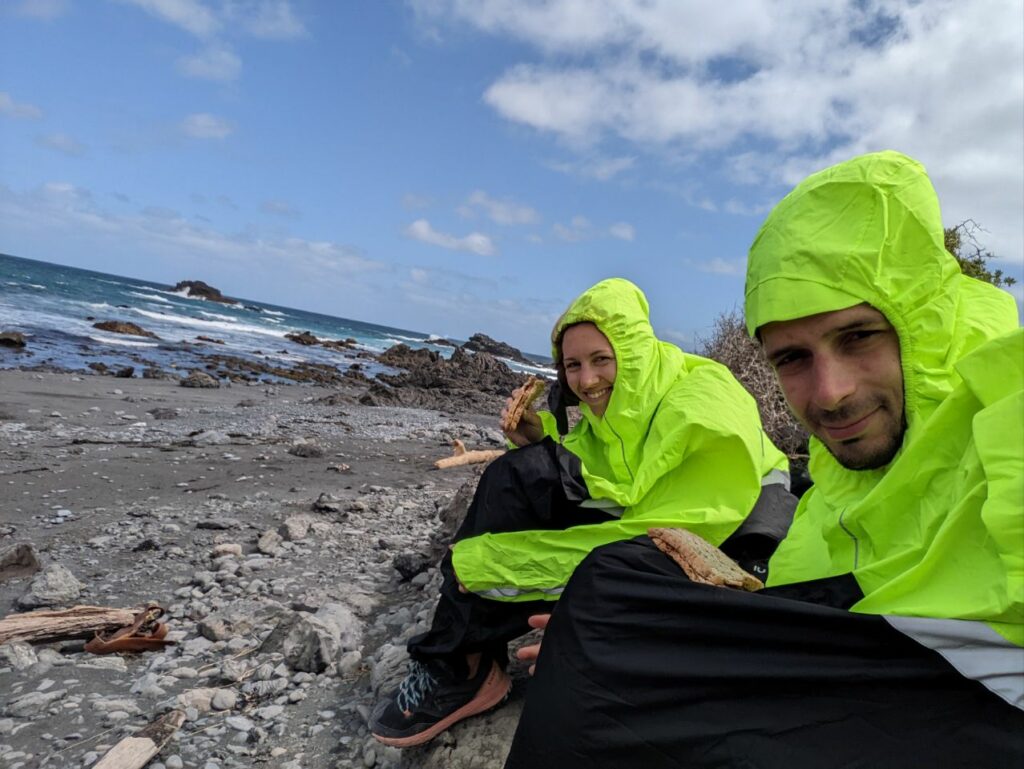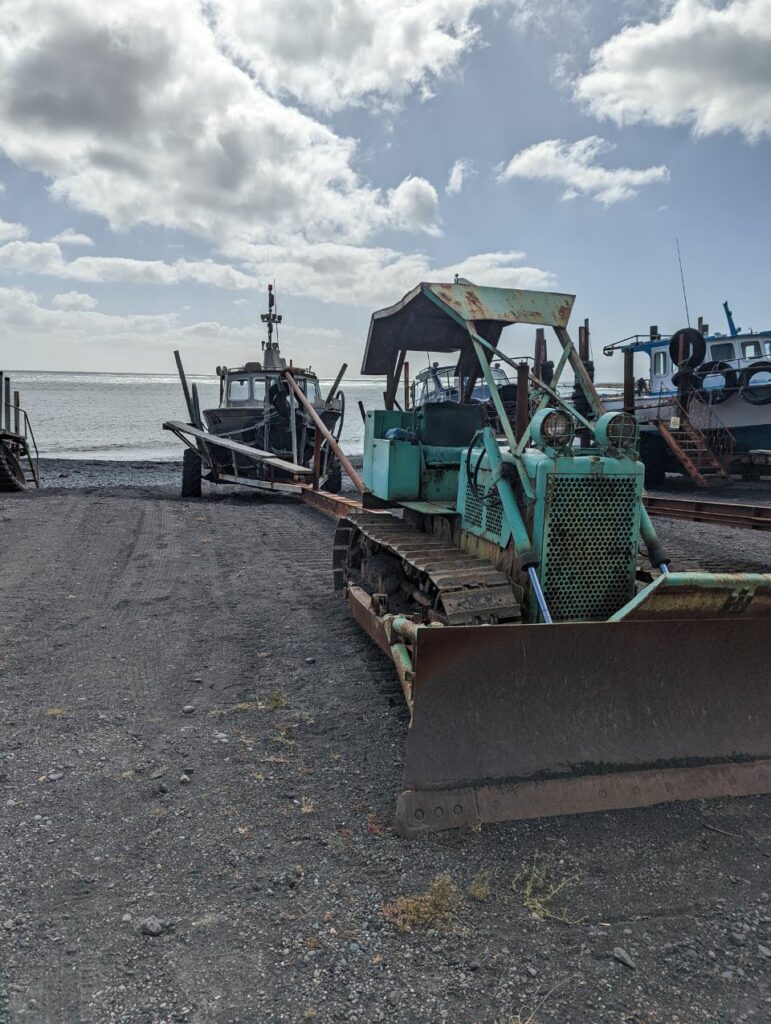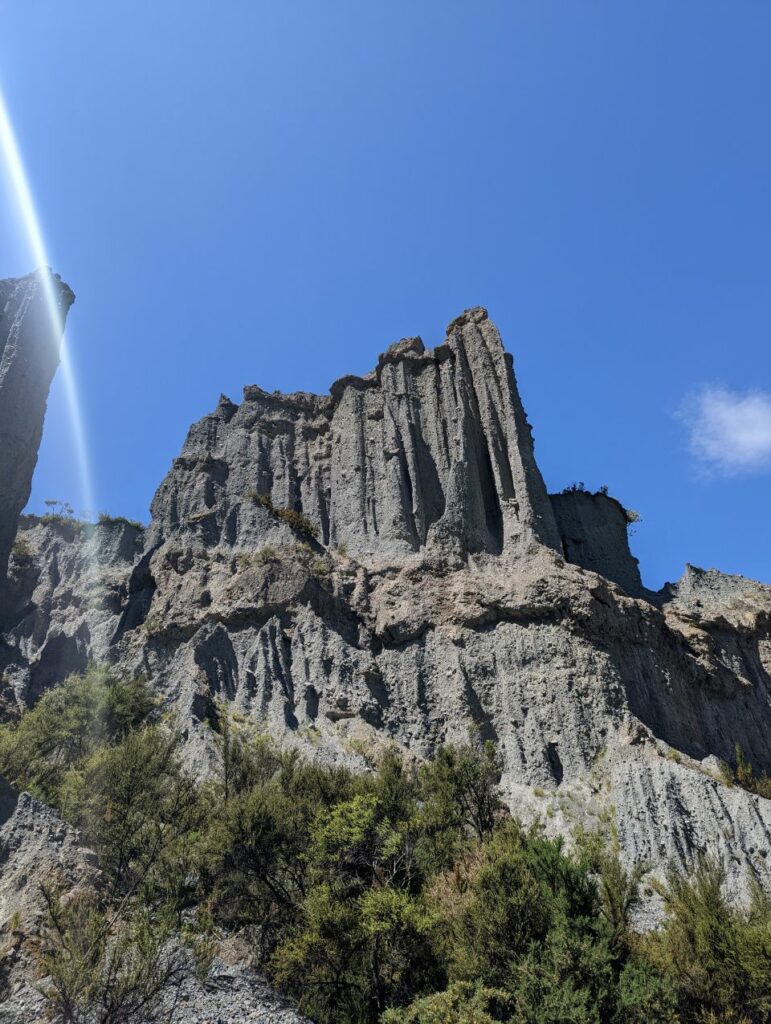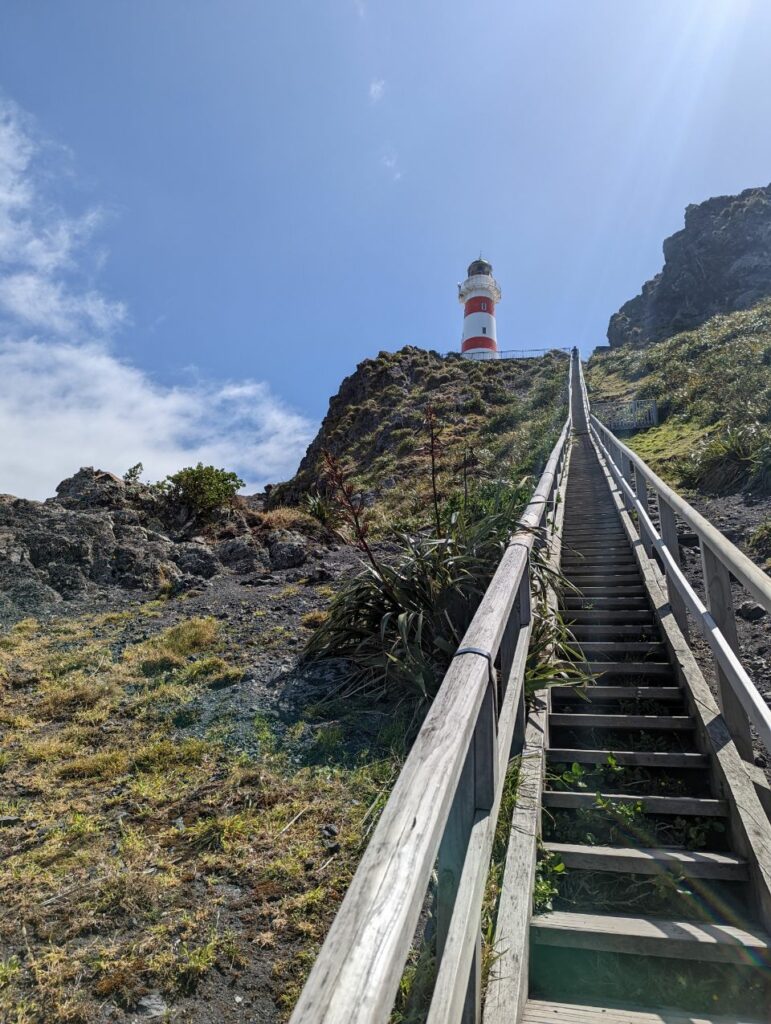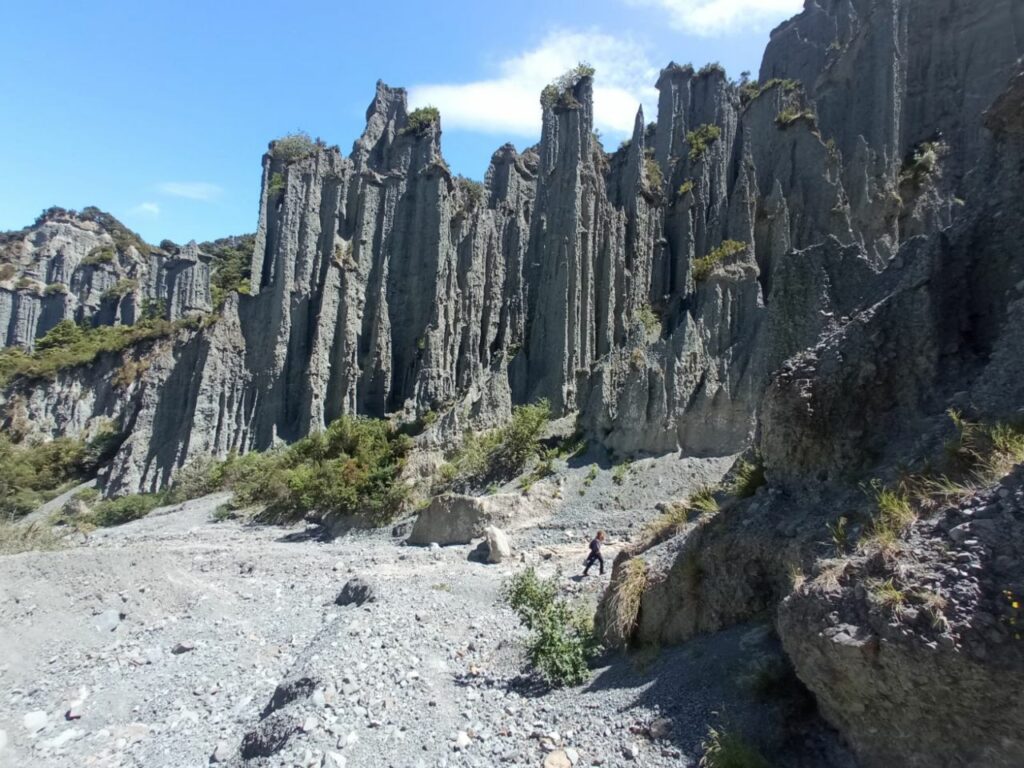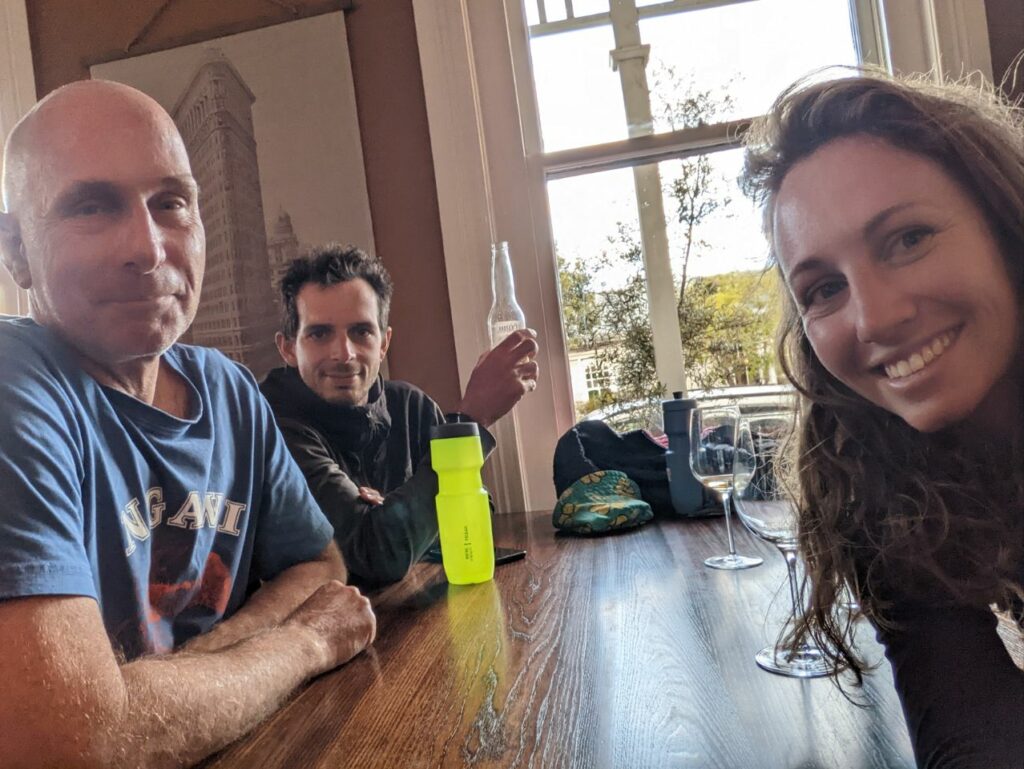Aujourd’hui on a décidé de poser nos vélos et de faire un tour autour de Martinborough
Mais comme tout est loin on fait du stop ! On atteint notre première destination avec 3 voitures et même pas deux minutes d’attente entre chaque ( Cole le Plombier, John l’agriculteur et un Couple de Néo-zélandais)
On arrive au Pinnacles ou a été tourné une scène du Seigneur des Anneaux, paysage juste incroyable, des énormes tours de roche ( qui donnent l’impression qu’elle pourrait s’effondrer à tout moment)
On se rend ensuite au Phare de Cape Palisser avec ses 252 marches pour l’atteindre. Deux autres voitures nous ont prises très rapidement dont une dans le truck !!
Déjeuner près du rocher des phoques mais les mouettes nous ont vite chassé
On décide de repartir à pied le long de la plage et on recommence à faire du stop un peu tard avec une voiture tous les 1/4 d’heure 😅
On est finalement pris par des golfeurs après avoir marché quelques km puis par Philip le photographe qui nous a non seulement ramené à bon port mais qui nous a aussi fait visiter les alentours en voiture ! On finit cette belle journée par un vin local avec Philip
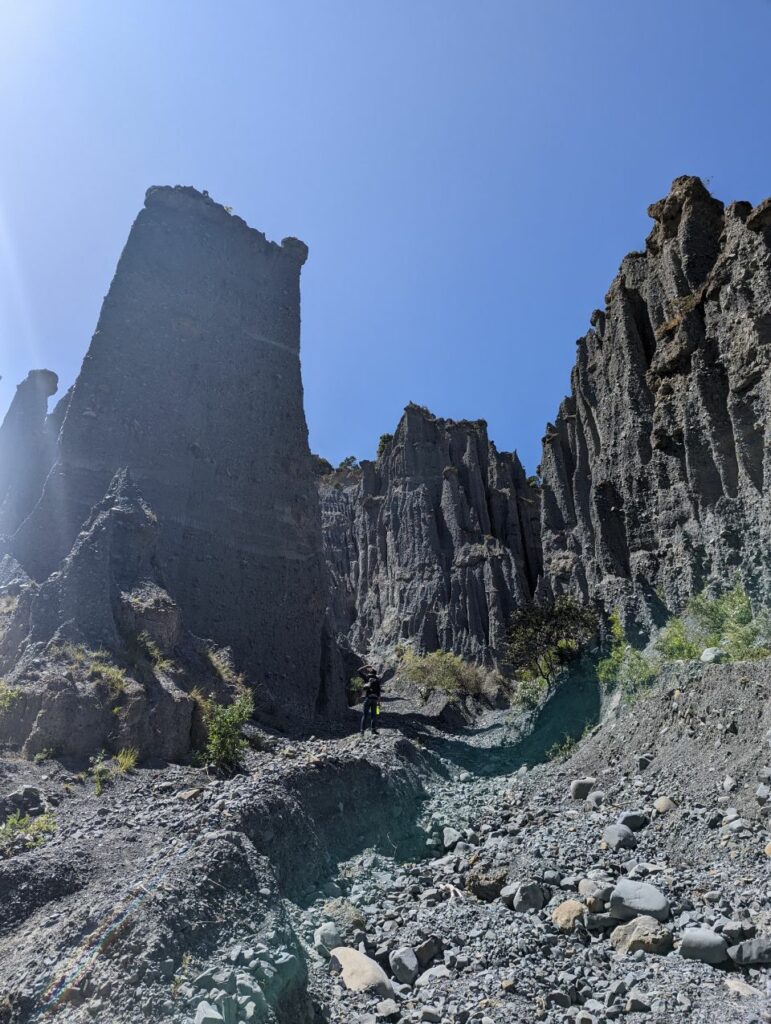
CAPE PALLISER
10th November 2022
Cape Palliser is a promontory on the southern coast of New Zealand’s North Island and is the southernmost point of the North Island; it is in fact considerably farther south than Nelson or Blenheim in the South Island.
It is located at the eastern end of Palliser Bay, 50 kilometres southeast of Wellington – 100 kilometres by road.
A small settlement – Ngawi – is situated near Cape Palliser, where the main income comes from crayfish (southern rock lobster) fishing. Fishing boats are pushed into the sea on their trailers by bulldozers.[1]
Kupe’s Sail is another feature of Cape Palliser – a triangular upthrust of sedimentary rock shaped like a sail.[2] Maori history and the Kupe legend both feature Cape Palliser.[2][3] Cape Palliser was named in 1770 by Captain James Cook in honour of his friend Admiral Sir Hugh Palliser of the British Royal Navy.[1]
The Cape Palliser Lighthouse is located here; it was first lit in 1897 but became automated in 1986.[4] It flashes twice every 20 seconds.[3]
Biodiversity
Cape Palliser is home to a permanent fur seal colony. The rookery was found there in 1991, the first one found in the North Island in the 20th century, indicating that the seals are recovering from previous exploitation.[5][1]
Cape Palliser is also a breeding site for red-billed gulls. This species has the conservation status of « Nationally at risk » and is « Regionally Vulnerable » in the Wellington region.[6]

